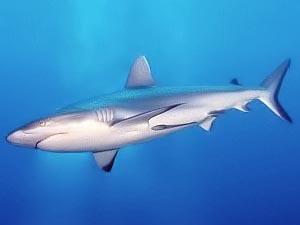
Despite widespread fascination with sharks, the world’s oldest ocean predators have long been a genetic mystery. The first deep dive into a great white shark’s genetic code has fished up big surprises behind a design so effective it has barely changed since before dinosaurs roamed.
Cornell researchers have discovered that many of the endangered great white shark’s proteins involved in an array of different functions — including metabolism — match humans more closely than they do zebrafish, the quintessential fish model.
…
“We were very surprised to find, that for many categories of proteins, sharks share more similarities with humans than zebrafish,” Stanhope said. “Although sharks and bony fishes are not closely related, they are nonetheless both fish … while mammals have very different anatomies and physiologies. Nevertheless, our findings open the possibility that some aspects of white shark metabolism, as well as other aspects of its overall biochemistry, might be more similar to that of a mammal than to that of a bony fish.”
Sharks, for what it is worth, are cartilaginous fishes, so they don’t fossilize much, except for the teeth and scales:
We don’t have much in the way of direct evidence, except for a handful of fossilized scales, but the first sharks are believed to have evolved during the Ordovician period, about 420 million years ago (to put this into perspective, the first tetrapods didn’t crawl up out of the sea until 400 million years ago).
Somebody got an explanation? Or is this just another evolution news dump, hoping no one will say, how weird is THIS?